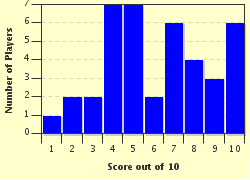Quiz Answer Key and Fun Facts
1. Havana was believed to have been founded in either 1514 or 1515 by Diego Velazquez de Cuellar, a Spanish conquistador. But which little known Spanish explorer first visited the location that would Havana in 1509?
2. What was the main reason it took Havana nearly a century and half after its founding to have a permanent, growing population?
3. In the late 1500s, there was an organized effort to fortify Havana to improve its defense. Which UNESCO World Heritage Site, completed in 1577, was built to protect the harbor and the city center?
4. What is the name of the British military man who led the successful Battle of Havana in 1762, giving control of the city to the British?
5. In 1763, the Treaty of Paris ended the Seven Years' War and Havana was returned to Spain in exchange for giving what territory to the British?
6. Which German scientist is sometimes called the "second discoverer of Cuba" because he discovered new ways to improve Havana's sugar industry at the turn of the 19th century?
7. In 1865 and the years afterward, why did Havana see an increase in immigrants from the United States?
8. What was the name of the U.S. battleship that suddenly blew up in Havana Harbor, an event that started the Spanish-American War?
9. Havana went through drastic changes during the 1959 revolution orchestrated by Fidel Castro. One of Castro's key Communist reforms was nationalizing foreign (especially U.S.) owned private property in Cuba. This forced which American author, who lived in Havana for two decades and was delighted initially with Castro, to leave the city for good two years before his suicide?
10. At the turn of the twenty-first century, the Cuban Government began rebuilding Havana's infrastructure in its historical districts. This was seen by many as a way to improve the economy. The Cuban economy tanked in 1991 after what event?
Source: Author
Joepetz
This quiz was reviewed by FunTrivia editor
gtho4 before going online.
Any errors found in FunTrivia content are routinely corrected through our feedback system.

